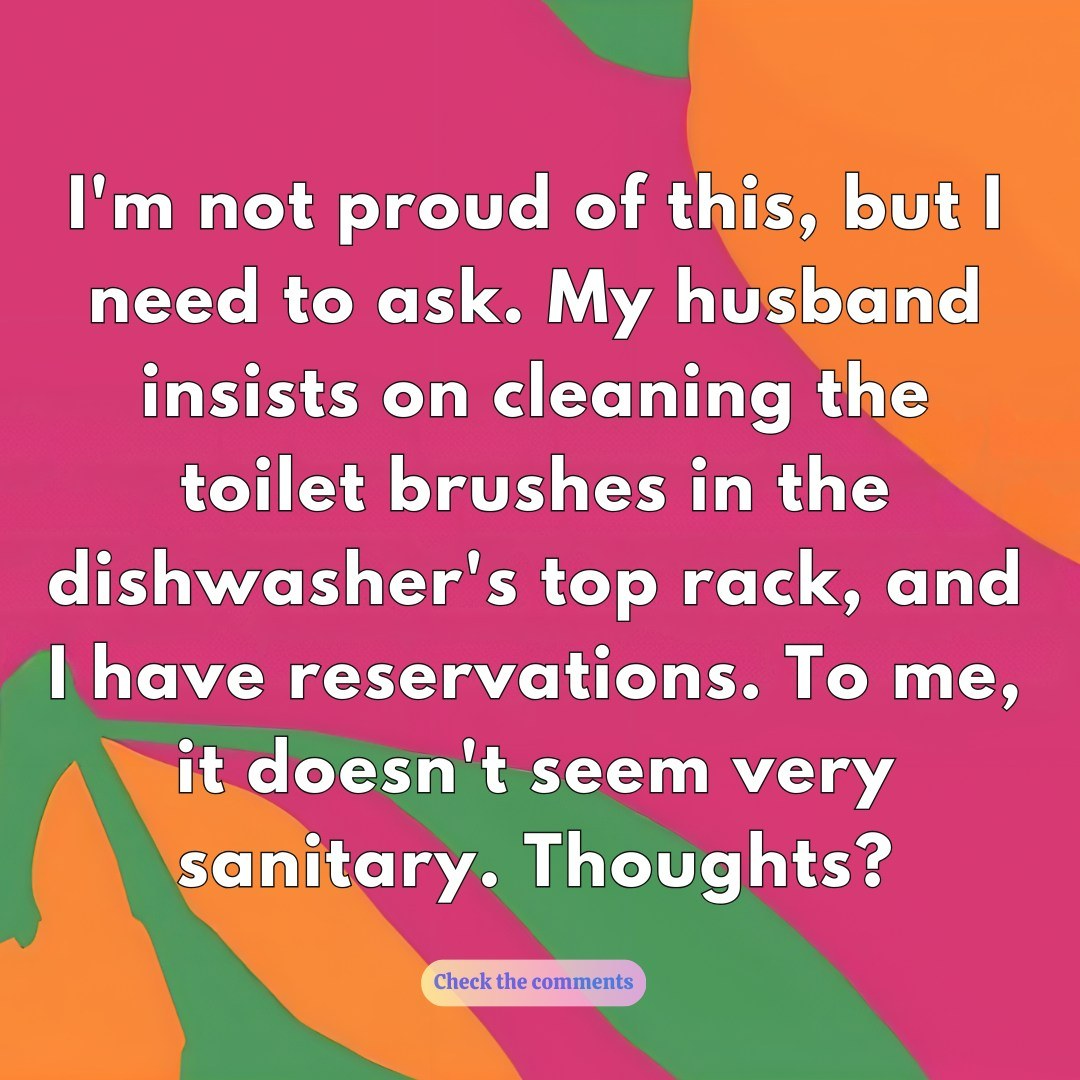Keeping your home clean is a priority, especially when it comes to the bathroom. One of the most essential tools for maintaining bathroom hygiene is the toilet brush. Over time, this brush can become contaminated with germs, bacteria, and even fecal matter. So, it’s only natural to wonder if there’s an easy way to clean it—like putting it in the dishwasher. Although this might seem like a convenient idea, it carries significant risks. Let’s break down these risks and explore safer, more effective alternatives.

The Risks of Washing a Toilet Brush in the Dishwasher
At first glance, using a dishwasher to clean a toilet brush seems practical. Dishwashers are, after all, designed to clean thoroughly. However, there are several major concerns with this approach:
1. Risk of Cross-Contamination
Dishwashers are primarily intended for cleaning dishes, utensils, and other kitchen items that come into contact with food. When you put a toilet brush in the same environment, you risk cross-contaminating your clean dishes. Harmful bacteria such as E. coli and Salmonella can transfer from the toilet brush to your dishes, utensils, and glasses. The thought of toilet germs contaminating your eating utensils is both unsanitary and a potential health hazard.
2. Ineffectiveness in Killing All Bacteria
Dishwashers do a fantastic job of cleaning off food residue, but they may not reach the temperatures needed to kill all the bacteria and pathogens present on a toilet brush. Fecal bacteria and other harmful pathogens require targeted disinfection with stronger agents—something a regular dishwasher cycle simply cannot achieve effectively.
3. Potential Damage to the Brush and Dishwasher
Most toilet brushes are made of plastic, which can’t always withstand the intense heat and high pressure inside a dishwasher. This could result in a deformed or damaged brush, making it less effective for future use. Additionally, placing a non-kitchen item like a toilet brush in your dishwasher could damage the appliance. Residual particles from the brush might clog the dishwasher or lead to scratches and mechanical issues, ultimately reducing its lifespan and efficiency.
Better Alternatives for Cleaning a Toilet Brush
Rather than risking damage to your health and dishwasher, conside
1. Bleach Solution: A Powerful Disinfectant
A great way to clean a toilet brush thoroughly is by soaking it in a bleach solution. To do this, mix one part bleach with six parts water and let the brush soak for about an hour. After soaking, rinse the brush thoroughly with clean water and let it dry completely before placing it back in its holder. This method effectively kills bacteria, keeping your brush fresh and ready for future use.
2. Hydrogen Peroxide: A Gentle, Natural Disinfectant
If you’re looking for a less harsh option, hydrogen peroxide is an excellent alternative. This natural disinfectant works much like bleach but is less abrasive. Simply soak the toilet brush in hydrogen peroxide for some time, then rinse it thoroughly with water. This is a safe, eco-friendly way to disinfect the brush without dealing with the strong fumes associated with bleach.
3. Vinegar and Baking Soda: A Chemical-Free Solution
For an all-natural option, vinegar and baking soda can do wonders. Start by soaking the toilet brush in a mixture of equal parts vinegar and water. Then, add baking soda to the mix. The fizzing reaction will help break down grime and kill bacteria. After soaking for about an hour, rinse the brush thoroughly and allow it to dry completely.
Tips for Proper Toilet Brush Care
To ensure your toilet brush stays clean and your bathroom remains sanitary, follow these simple care tips:
1. Allow the Brush to Dry Completely
After using the toilet brush, don’t immediately put it back into its holder if it’s still wet. Moisture provides the perfect environment for bacteria to thrive. Instead, allow the brush to dry completely by placing it over the toilet or in a well-ventilated area. This helps minimize bacterial growth.
2. Clean the Brush Regularly
Cleaning and disinfecting your toilet brush regularly is key. Depending on how often you use it, aim to clean the brush at least once a week using one of the methods mentioned above. Regular cleaning keeps the bathroom as germ-free as possible, contributing to a healthier home.
3. Replace the Brush When Necessary
Even with regular cleaning, toilet brushes are not built to last forever. If the bristles start to wear out or the brush develops a lingering odor that won’t go away, it’s time to replace it. For optimal cleanliness, consider getting a new toilet brush every six months to a year.
Don’t Forget About the Toilet Brush Holder
It’s easy to overlook the toilet brush holder, but it too can be a breeding ground for bacteria. To keep both the brush and the holder clean, use bleach, hydrogen peroxide, or a vinegar and baking soda mixture as described earlier. By cleaning the holder regularly, you ensure the brush remains hygienic and ready for use.
Washing a toilet brush in the dishwasher might seem like a convenient shortcut, but the risks far outweigh any potential benefits. The dangers of cross-contamination, the inability of a dishwasher to kill all bacteria, and the potential damage to your appliance make this method unsafe. Instead, rely on proven methods like bleach, hydrogen peroxide, or vinegar and baking soda to disinfect your toilet brush properly.



